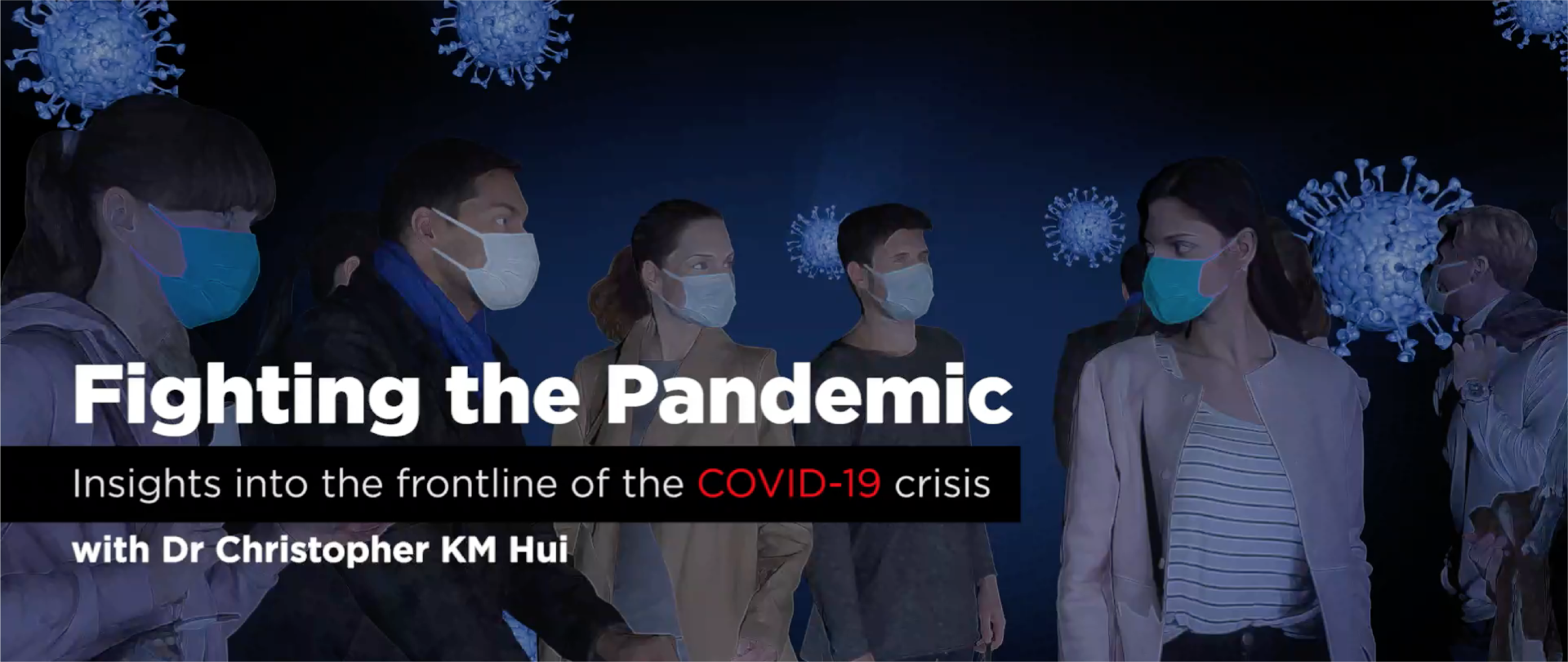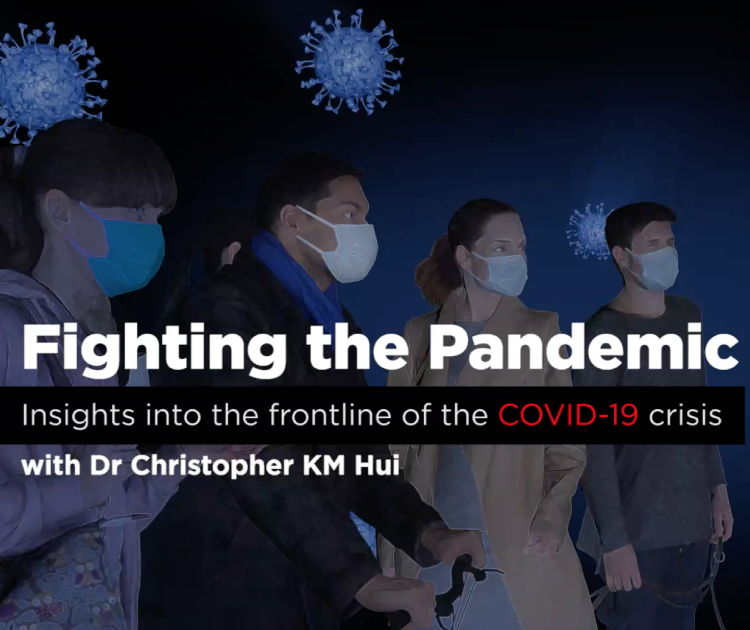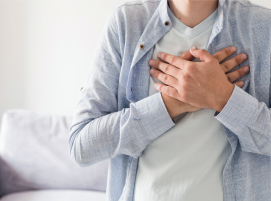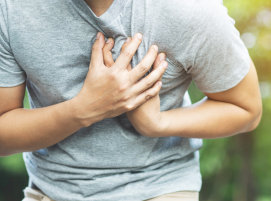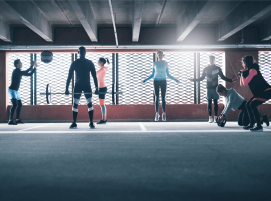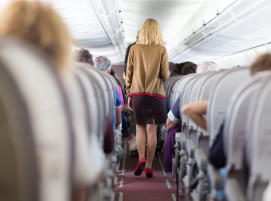When COVID-19 emerged, respiratory medicine specialist DR CHRISTOPHER K M HUI found his already dynamic working life become even more intense. Having juggled daily roles in both Hong Kong and Shenzhen for seven years, he now found he was needed for crucial pandemic-related work across both locations. He shares his story below.
Tell us a bit about the start of 2020 and how the COVID-19 crisis impacted your work.
On 10 January 2020, we accepted our first COVID-positive patients – they were all admitted to my wards over the course of that first week, at the University of Hong Kong-Shenzhen Hospital in Shenzhen. We immediately recognised this to be an important, sentinel event. I worked closely with Professor KY Yuen at the HKU labs to collect all the clinical samples and data, and to draw up the original detailed “map” of the (then) novel virus. It was a real race against time. We didn’t sleep in those first 10 days!
By the eve of Chinese New Year, we knew there was a very big problem on the horizon. I realised it would require a full-time commitment to the frontline, and I couldn’t ask my colleagues to undertake duties if I wasn’t there to support them in person. So I packed my bags after enjoying a traditional “year-end” meal with my family and returned to the hospital.
This story would evolve to go on to become one of the largest local epicentres in the country outside of Hubei Province. And, by the morning of 13 February, there were more than 60,000 cases of COVID-19 confirmed in China.
What new duties did you find yourself handling as the pandemic developed?
As all the COVID patients were being admitted to my wards, I immediately re-organised our staffing to provide 24-hour cover with a six-day-on, three-day-off rest pattern in 12-hour shifts. This reduced the number of staff exposed to COVID-ward duties, while enabling each team unit to rest properly between shifts. We knew this was going to be a marathon and not a sprint. We trebled our ward service to cover six new isolation wards, and started to build further isolation facilities with converted modular containers. I remember being up at 3am to help supervise the installation of these “new wards”.
In those weeks around Chinese New Year, I was the only senior lead from Hong Kong on site, as many colleagues were suddenly unable to report when the borders closed. During this difficult period, we were at the same time both leaders and front-line colleagues. We could only lead by setting the right example. As numbers rose, I would often see fear in our junior colleagues, but as managers, we couldn’t let our burdens become their concerns.
In the beginning, critical Personal Protective Equipment (PPE) for the staff was difficult to procure in large supply. So we set up our own sourcing groups for masks, gowns, gloves and face-shields. Every evening after work, I would run cars to personally pick up international shipments of PPE to make sure the hospital was adequately stocked.
On the medical side of things, how does COVID impact our body and respiratory system?
As the infection spread rapidly throughout the world, we recognised its range of presentations, from asymptomatic infection to mild respiratory tract symptoms to severe pneumonia with acute respiratory distress syndrome (ARDS) and multi-organ dysfunction. The main symptoms of coronavirus are a high temperature, a new, continuous cough and a loss or change to your sense of smell or taste.
In pneumonia caused by COVID-19, the lungs become filled with fluid and inflamed, leading to breathing difficulties. For some people, it can become severe enough to require treatment with oxygen or even a ventilator. While most people recover from normal pneumonia without any lasting lung damage, the pneumonia associated with COVID may be severe. Even after the disease has passed, lung injury can result in breathing difficulties that might take months to improve.
Our understanding of the spectrum of disease as well as optimal management strategies continues to evolve.
Tell us the work you’ve been doing around your findings of blood clots in many COVID patients.
In the early months of the pandemic, screening for thromboembolism (blood clots in veins) became an important consideration. I remember one particular ward round back in April last year in London when we requested six scans for clots in the lungs; all six came back positive. Urgent and longer-term anticoagulation become an important part of our treatment. We also saw many patients with microvascular and other types of inflammation that resulted in embolisation and smaller blood clots in the smallest vessels of the extremities; this would develop into a type of dry gangrene at the fingers and toes.
Many of these patients required treatment with anticoagulants such as low-molecularweight heparin, warfarin or the newer Novel Oral Anticoagulants (NOACs). I still have some patients on these drugs after a year of treatment for severe COVID. The advantage of NOACs is that they require less monitoring and can be taken more safely by patients without regular supervision and dietary restriction.
Can you give us some insights into the cases you handled?
Some of the sickest patients we saw were in intensive care for between 50 and 100 days. Such an extended stay on ICU causes can lead to other risks and challenges; these include muscle wastage, secondary infection, kidney failure and other organ dysfunction. While it’s always very difficult seeing patients who are so ill, one of the hardest things about this pandemic has been the absence of visitation rights at the hospital – family, friends, partners and parents not being able to be at the bedside because of the risk of infection. We did our best with communication – using iPads for video-calls, for example. But technology can’t always replace the warmth of human presence and contact. I found this to be one of the hardest aspects of our work.
From a staff point of view, one of the hardest things is working long hours in PPE, which can be very hot and stuffy – especially when using N95 respirators. I remember one ward round where my colleague passed out! We had to get her a chair and attend to her before seeing the final patient that morning.
Any positives to come out of COVID on the medical side of things?
In amongst hardship, we’ve also witnessed a lot of good things. I’ve been fortunate to be surrounded by excellent colleagues. These peers and professionals have always stepped forward to do the most difficult jobs under the hardest of circumstances. Our nursing colleagues have delivered so much more than required in the service of patients. There’s been a stoic solidarity in all the hospitals I’ve worked in this past year. Cooperation and sharing of information within parts of the medical profession has also been unprecedented.
We have also witnessed the fastest development of novel vaccines in history. I do hope that the candidates we have now will now go on to help control the transmission and outbreak of this virus.
About Dr Hui
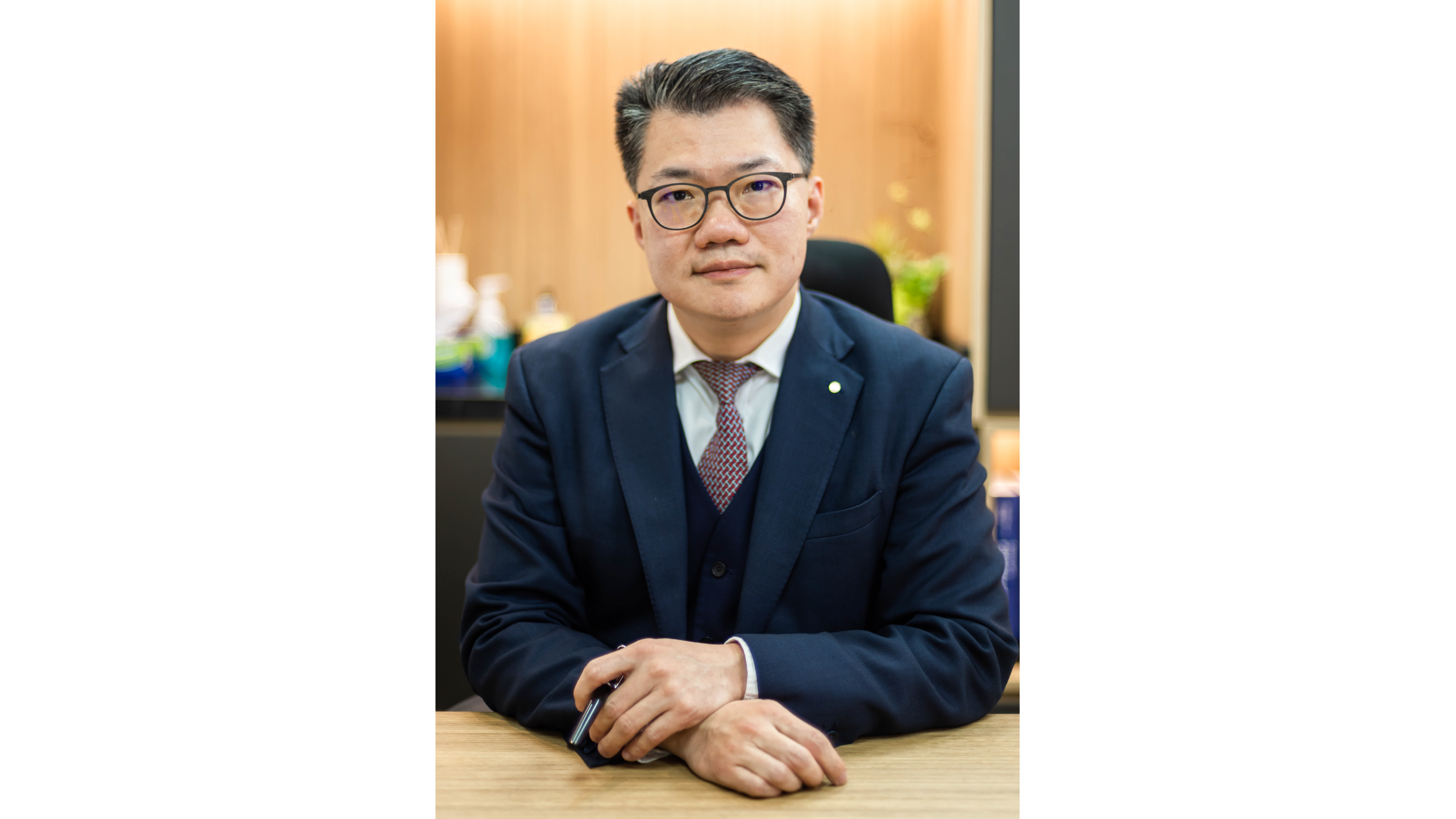
After qualifying from the Royal Free & University College School of Medicine (University of London) with Distinction Honours, Dr Hui continued postgraduate and specialist training in the UK. He returned to Hong Kong in 2010 and was offered a post at Queen Mary Hospital and the University of Hong Kong with the Division of Respiratory & Critical Care Medicine, before becoming Chief of Service and Clinical Lead in Respiratory & Critical Care Medicine at the new University of Hong Kong-Shenzhen Hospital in 2013. Before COVID, his chief interests were the research areas of airways disease, molecular lung pathology, lung transplantation and lung cancer research.

This article first appeared in the Spring 2021 issue of Expat Living magazine.
https://expatliving.hk/covid-19-respiratory-specialist-hong-kong-dr-christopher-hui/
https://e-magazine.cld.bz/Expatliving-HongKong/hk-March-May-2021/74/
